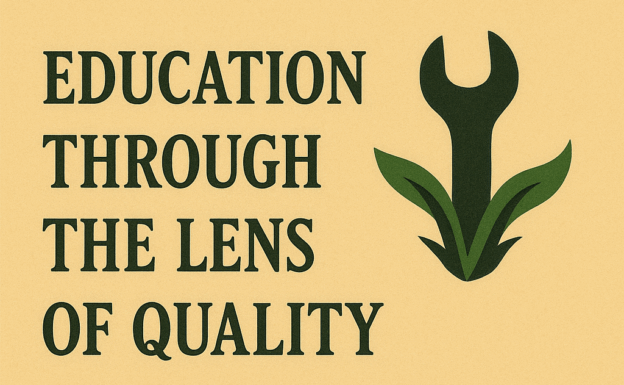An article discussing how Pirsig’s ideas can transform educational approaches, emphasizing the importance of quality in teaching methods, curriculum development, and student engagement.
Robert M. Pirsig’s Metaphysics of Quality (MOQ) offers a transformative perspective that can significantly enhance educational approaches. By emphasizing the centrality of quality in teaching methods, curriculum development, and student engagement, Pirsig’s ideas provide a framework for creating more effective and meaningful educational experiences. This article explores how the principles of quality can be applied to various aspects of education, fostering environments where both students and teachers thrive.
The Concept of Quality in Education
In Pirsig’s framework, quality is the fundamental measure of value and excellence. Applying this concept to education means prioritizing the intrinsic value of learning and ensuring that educational practices promote both intellectual and personal growth. Quality in education is not just about measurable outcomes, such as test scores, but about fostering a deep, holistic understanding and appreciation for knowledge.
Quality in Teaching Methods
- Active Learning: Quality teaching methods engage students actively in the learning process. This involves moving beyond traditional lectures to include interactive discussions, hands-on activities, and collaborative projects. Active learning encourages critical thinking and helps students develop practical skills.
- Personalized Instruction: Recognizing that each student is unique, quality teaching adapts to individual learning styles and needs. Personalized instruction can include differentiated teaching strategies, individualized feedback, and flexible pacing, allowing students to learn in ways that suit them best.
- Reflective Teaching: Quality teaching involves continuous self-assessment and improvement. Educators should regularly reflect on their teaching practices, seek feedback from students, and stay updated with the latest educational research. This reflective approach ensures that teaching methods remain effective and relevant.
Quality in Curriculum Development
- Integrated Curriculum: A quality curriculum integrates various subjects and disciplines, promoting a holistic understanding of knowledge. Interdisciplinary approaches help students make connections between different areas of study and apply their learning to real-world problems.
- Relevance and Real-World Application: Curriculum development should prioritize relevance and real-world application. By including practical examples, case studies, and project-based learning, educators can make the curriculum more engaging and meaningful for students.
- Balance of Static and Dynamic Content: Inspired by Pirsig’s distinction between static and dynamic quality, a quality curriculum balances foundational knowledge (static quality) with innovative, up-to-date content (dynamic quality). This ensures that students acquire essential skills while staying abreast of current developments in their fields.
Quality in Student Engagement
- Intrinsic Motivation: Quality education fosters intrinsic motivation by creating a learning environment that is interesting and inspiring. This involves connecting learning materials to students’ interests, encouraging curiosity, and promoting a love for learning.
- Student-Centered Learning: Placing students at the center of the learning process is key to engagement. This means giving students a voice in their education, encouraging them to take ownership of their learning, and involving them in decision-making processes related to their studies.
- Supportive Environment: A quality educational environment is supportive and inclusive, ensuring that all students feel valued and capable. This includes providing emotional and academic support, fostering a sense of community, and addressing the diverse needs of students.
Transforming Education with Pirsig’s Principles
- Teacher Training and Development: To implement quality-focused education, it’s essential to invest in teacher training and professional development. Educators should be equipped with the skills and knowledge to apply Pirsig’s principles in their classrooms, including active learning techniques, personalized instruction, and reflective practices.
- Assessment of Quality: Traditional assessment methods often focus solely on quantifiable outcomes. However, quality education requires a more comprehensive approach to assessment that includes qualitative measures such as student feedback, self-assessments, and portfolio reviews. These methods provide a more accurate picture of student learning and progress.
- Institutional Support: Schools and educational institutions must support the pursuit of quality by fostering a culture that values continuous improvement and innovation. This involves providing resources for curriculum development, encouraging collaboration among educators, and promoting policies that prioritize student well-being and engagement.
Case Studies of Quality in Education
- Montessori Education: Montessori schools exemplify the application of quality principles by emphasizing self-directed learning, hands-on activities, and mixed-age classrooms. This approach fosters intrinsic motivation and holistic development, aligning closely with Pirsig’s ideas.
- Project-Based Learning (PBL): Schools that implement PBL focus on dynamic, real-world projects that require students to apply their knowledge creatively and collaboratively. This method balances static foundational skills with dynamic problem-solving abilities, demonstrating the integration of Pirsig’s concepts.
- Finland’s Education System: Finland’s education system is often cited for its high quality, which can be attributed to its student-centered approach, emphasis on teacher autonomy and professional development, and focus on holistic well-being. Finnish schools prioritize meaningful learning over standardized testing, reflecting the principles of quality education.
Conclusion
Robert M. Pirsig’s Metaphysics of Quality offers valuable insights that can transform educational practices. By prioritizing quality in teaching methods, curriculum development, and student engagement, educators can create more effective, meaningful, and fulfilling learning experiences. Integrating Pirsig’s principles into education promotes a balanced approach that values both foundational knowledge and innovative thinking, ensuring that students are well-prepared for the challenges of the future. As educators embrace the Metaphysics of Quality, they can inspire a new generation of learners to appreciate the intrinsic value of education and strive for excellence in all their endeavors.
